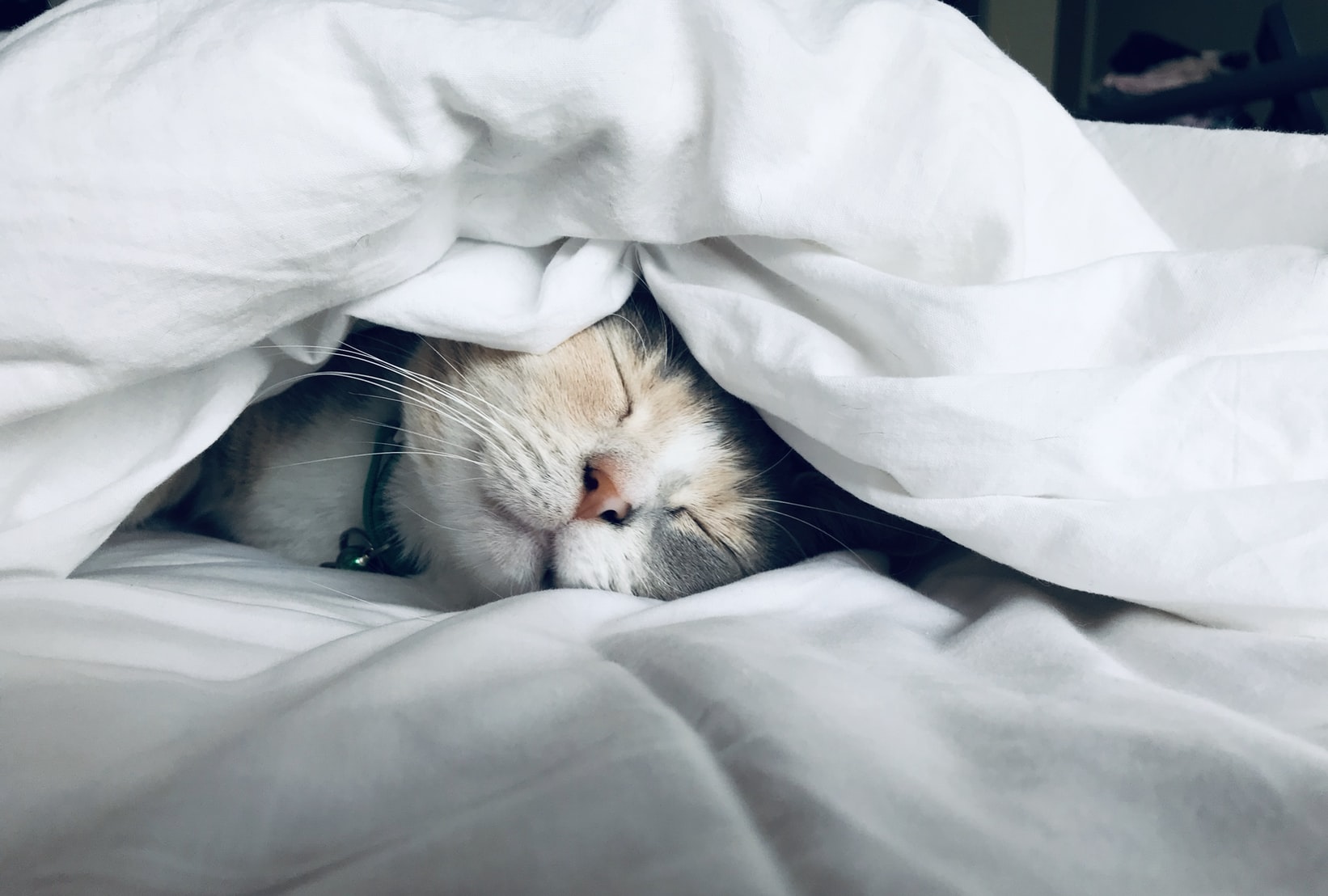By Sylvana Rinehart, Certified Concierge Care Advisor
My husband and I are celebrating our thirty fifth wedding anniversary and we indulged in the purchase of a weighted blanket. This is the history behind this quirky purchase for a better night’s sleep for the next thirty-five years.
During the summer, my husband had cataract surgery. He is generally calm and low key, but having surgery on his eyes was weighing (pun intended) on him. Post-surgery, he told me that when he was first put on the operating table in a brightly lit cold room, he felt vulnerable and alone. A nurse must have read his thoughts as she came in and covered him with a warm, weighted blanket. Instantaneously he felt snug and much of the tension dissipated. Not long after that experience we started researching blankets and I was reminded of a tucked away memory of my teens. My French mother loved the Dutch thick and heavy woolen blankets from my father’s country. As a Foreign Service family we lived in different continents so the Dutch blankets came along with, and I always enjoyed their weight in winter. When my parents retired, we lived in the country next to a dense forest. One summer the forest caught fire and we literally had minutes to evacuate the house; my father took the important files, my sister her photo albums, I took my riding helmet, and my mother – you guessed it – took several of the Dutch blankets. All ended well and the blankets made it back to the house safe and sound and we all had a good laugh at what we had chosen for our respective “treasures.”
Scientific research on weighted blankets is lacking, however there has been some research funded by blanket makers, others by medical Institutions. “Weighted blankets have been around for a long time, especially for kids with autism or behavioral disturbances,” says Dr. Cristina Cusin, an assistant professor of psychiatry at Harvard Medical School. It is one of the sensory tools commonly used in psychiatric units. Patients who are in distress may choose different types of sensory activities — holding a cold object, smelling particular aromas, manipulating dough, building objects, doing arts and crafts — to try to calm down. The blankets are supposed to work much the same way tight swaddling helps newborns feel snug and secure so they can doze off more quickly. The blanket basically simulates a comforting hug, in theory helping to calm and settle the nervous system.
Swedish researchers conducted a study using 31 men and women with moderate insomnia and found that those who used the blanket for two weeks reported a calmer night’s sleep with fewer movements. Another study in 2015 found that after 32 adults used a 30-pound blanket, 63% reported lower anxiety and 78% preferred the weighted blanket to calm down. Dr. Raj Dasgupta, MD, assistant professor of clinical medicine at the University of Southern California and a spokesman for the American Academy of Sleep Medicine, says the blankets may help people with chronic pain sleep better, as well as those with anxiety or depression, but he also cautions patients that weighted blankets are not a cure-all for improving sleep.
Not long after we started research on the blankets, I met with a seasoned provider for an Adult Family Home that Concierge Care has been working with for many years. She was telling my client that these blankets might be able to help her mother with dementia sleep better and feel more secure. She has been using them for her residents with dementia successfully. She makes sure that their primary care physician signs off on the blanket and then carefully monitors her residents to make sure that it works for them. According to this provider, one of her residents who had just been given a weighted blanket said: “I have to go home before my mother gets after me. But when I go to bed, I have this nice blanket she gave me, and I know all is well. She tucks me in!”
Armed with the memories of my mother and her heavy woolen blankets and my husband’s story of having reduced anxiety during the prep for his surgery, I started looking on-line for a blanket for us. I soon realized that there are different weights, sizes and qualities. Blankets are made with beads and they are “quilted” to hold the beads in place. For users with sensory sensitivities, the fabric is going to be of importance. They make felted covers which are nice for winter months and for those who like cooler fabrics, bamboo is excellent. They feel soft and cool. They make covers which are easily washable. It is trickier to find actual blankets that can be washed at home. Weight varies from 5 lbs to 25 lbs. The general consensus is – take 10% of the person’s weight, add a few pounds and you have the ideal weight of your blanket. For couples in King-size beds, they suggest having two queens size blankets and for those in a Queen-size bed, you should get a King size blanket or two separate Full-size ones. For our seniors, I would start with a smaller blanket and try it out as a lap blanket and see if it provides comfort for your loved one.
After getting our blanket, I was bragging about it to my colleagues. Donna Mischke, who is our Director of Family Services, said that she and her family all have been using one for the past several years. I can see why she likes the blanket after a full day of dealing with our team’s high level of interaction, and being the interface with providers/operators of the Adult Family Homes! She needs and deserves comfort and hugs! Donna’s children love the blanket, and her son who is in college likes the smooth and tidy look on his bed, besides the great night sleep. I read that dogs and cats like these blankets, so pretty soon our whole family will be snug and benefiting from a better night’s sleep.

























